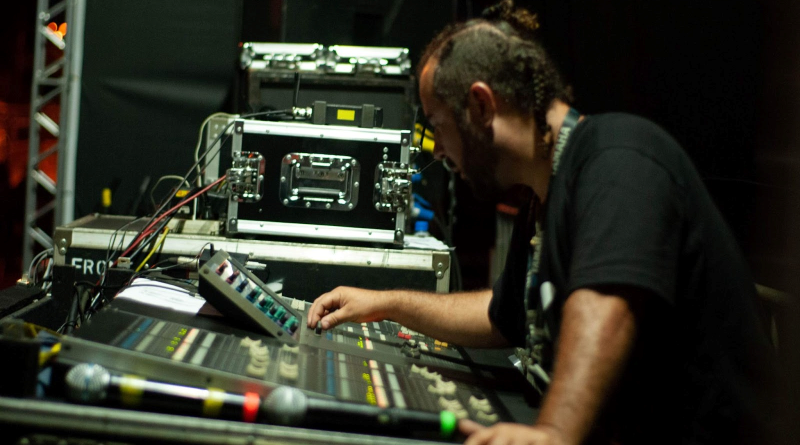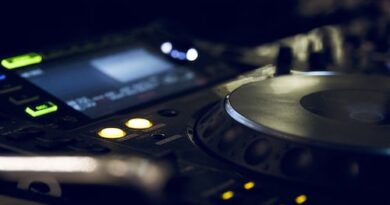The Basic Elements Of A Sound System
A sound system has become sort of a necessity nowadays in most households. Everyone requires a large sound system so as to cover the ensuite room with a wall of music. This is because music is an integral part of our lives, bringing us happiness and joy listening to them.
However, did you know that you can use your sound system as an audio recording system in your home? This is how many home music studios have risen to professional levels during the lockdowns of the pandemic.
Therefore, you need to ensure that you have the correct parts in place to produce the highest quality sound possible. If you want to know more about which elements are necessary for a sound system, then read till the end.
The Basic Elements Of A Sound System
There are many elements in a sound system. A unique part about them is that they can be customized and modified to your liking. Different parts have different functions. Therefore, the more parts you add and use, the more high-quality sound and utility you will get out of it.
Therefore, if you need the basic elements to get a high-quality studio-like sound from your sound system, read this article. Here, you will get all the details of the essential elements of a sound system that you need right now.
Mixer
An audio mixer is one of the most essential elements of a sound system. The job of the mixer is to adjust the various levels of sound frequencies. This helps in achieving a sound quality that is pristinely clear and sounds very eargasmic too.
A mixer is also called a soundboard because it has various knobs to adjust various levels of the output sound. It’s basically a converter that combines different audio signals and produces the final mix – the audio that we hear.
Alongside music signals, it also converts the various inputs that we give from musical instruments and microphones. Therefore, using a mixer, you can just the levels of feedback, treble, bass, gain, volume, reverb, and lots more.
However, when you shop for sound mixers, ensure that it has multiple channels to support all your audio inputs. You don’t want situations where the musical instruments are plugged in, but no ports are left for the singer’s mic.
Microphone
Whenever you go to an event, half of the audio mixer ports will be used up for jacking in mics. This is because microphones are one of the most important audio inputs you are going to need. Without it, no one will be able to voice and speech of the person on the podium or stage.
Therefore, there are many things to consider when deciding upon the type of microphone you need. One of the first things that you need to consider is the placement of the microphone. Is it placed on a stand and stays still, or will the person on stage move around with it?
Also, is the microphone a wired one, or is it wireless? This is because different types of microphones have different input systems. Therefore, you also need to ensure that the mic input jacks are compatible with your audio mixer.
In addition, acoustic instruments also need microphones to be near it. This is true in the case of acoustic percussion instruments like drums and bongos. These instruments require separate types of mics to work best.
Speaker
Whenever we talk about audio systems, only one thing comes to most people’s minds – multi-channel home theater systems. While these are pretty important things to consider, they are not the only ones. However, you have to mention that speakers are one of the fundamental components of a sound system.
Speakers provide the main audio output from all the various inputs. When it comes to events, the first thing you need to consider is the size of the venue and audience. Depending on its size, the size and the number of speakers will differ.
Secondly, depending on the number of performers’ instruments you have on stage, the number of speakers required can be assessed. This is important because many speakers will be used as monitors – speakers that the performers use to hear themselves.
Amplifier
When the audio output is projected out from an output system, you might not be able to hear low-level signals. This is because these low-level frequencies from the audio mixer often get overpowered by the high power frequencies. Therefore, you need an amplifier to make these frequencies louder.
Read Also: law firm seo services, real estate lawyer, corporate lawyers
Outboard Processing Gear
Every musician will have various gears that are jacked in to create the quality of sound that they desire. These processors help musicians to modify the sound that is transmitted from their instruments.
The most commonly used outboard processing gears are:
- Limiter: Limits the maximum range of frequencies of the output audio so that no peak blowouts of audio take place.
- Compressor: Compresses all the audio output frequencies so that louder frequencies are lowered and lower frequencies come higher to normalize the output sound.
- Delay: This is a trippy effect that is mainly given to stringed instruments to make the sound appear as if it’s repeating itself, or is looped.
- Reverb: Reverb adds extra depth to the audio output, to make it sound more polished.
Read Also: general practice attorney, car accident lawsuit, Immigration Law,
Conclusion
As you can read above, audio systems for live events require a lot of elements to be considered. Missing out on any of these systems will create a sound that is not high quality and doesn’t sound professional. Therefore, you have to ensure that you have all five elements of sound systems.
These five elements are – the audio mixer, microphones, speakers, amplifiers, and outboard processing gears of live instruments.
Read Also:




